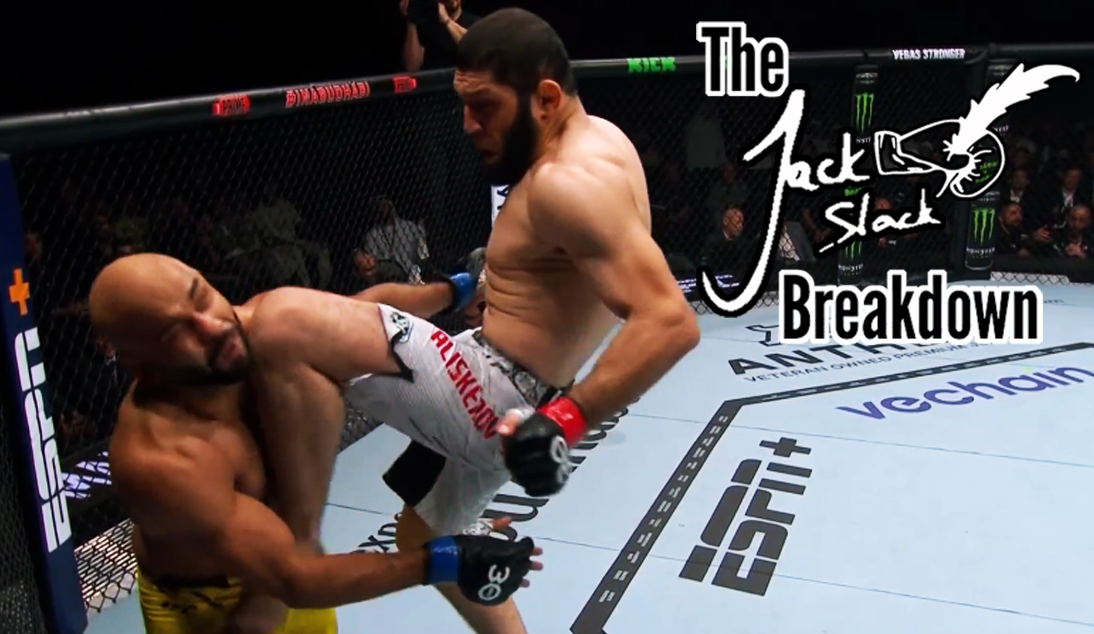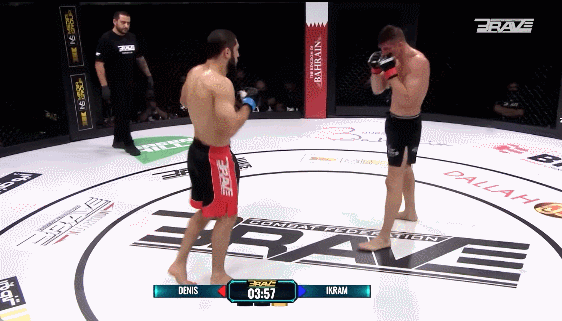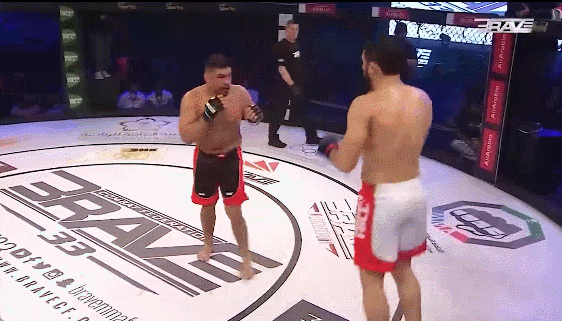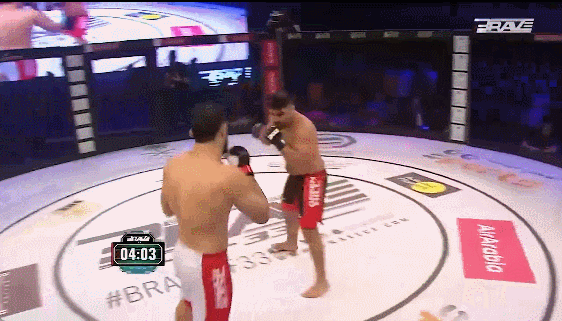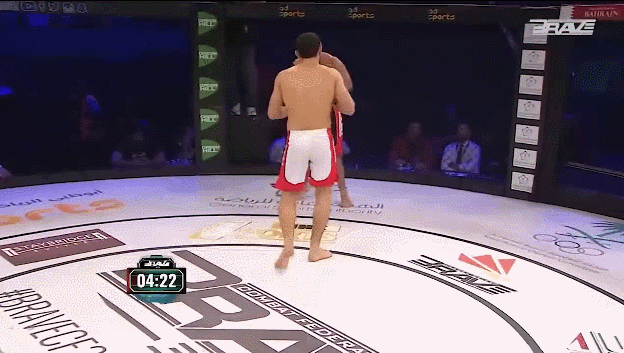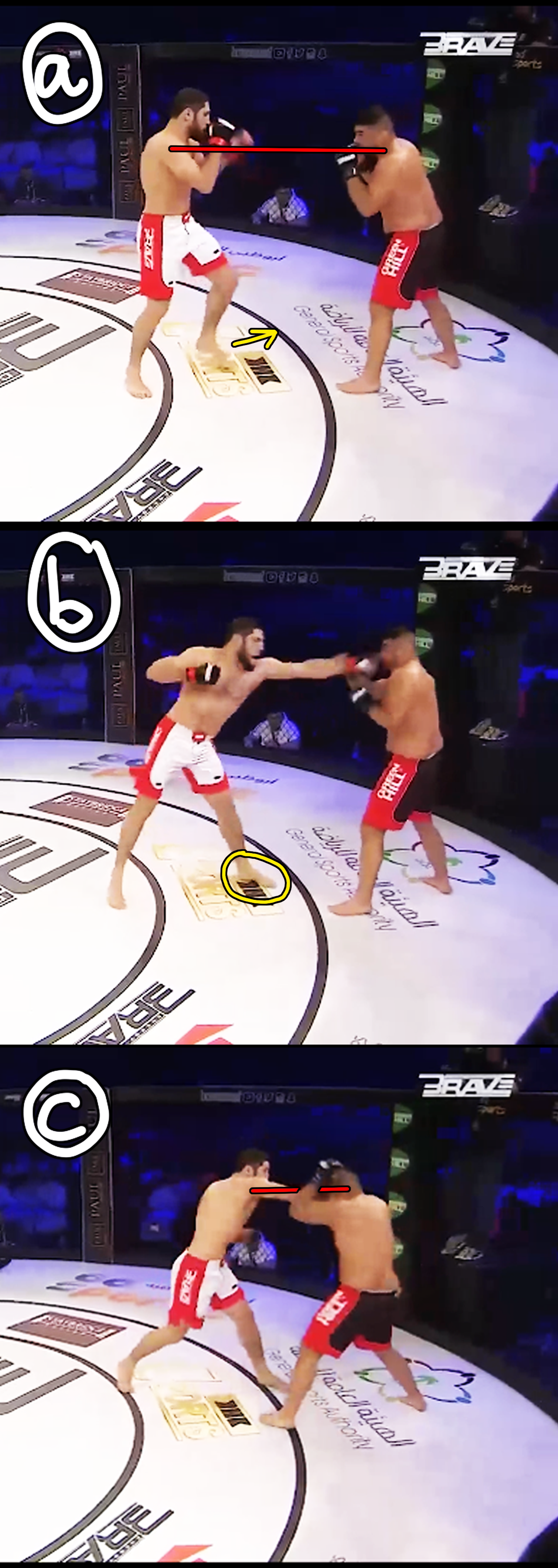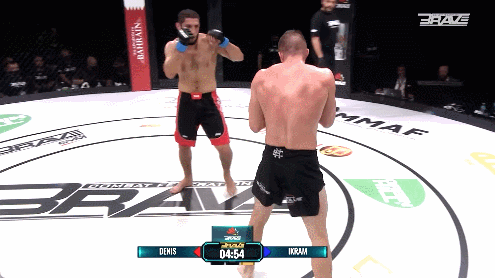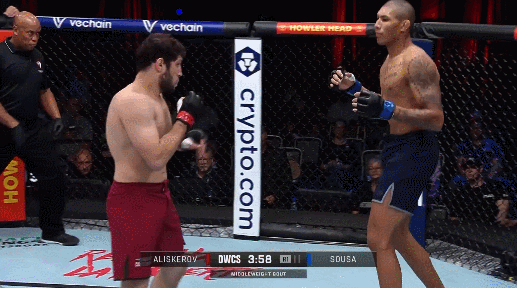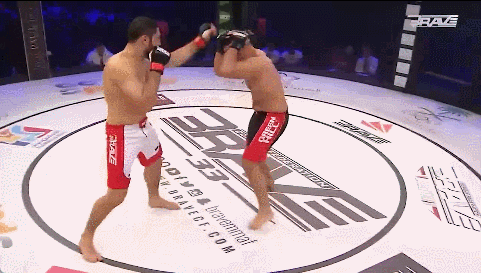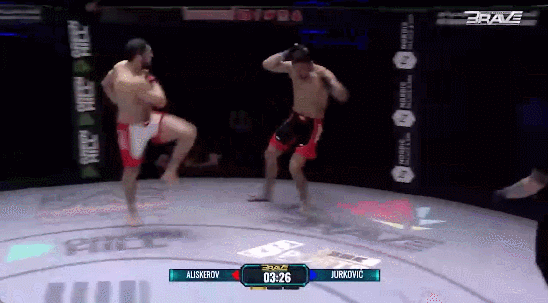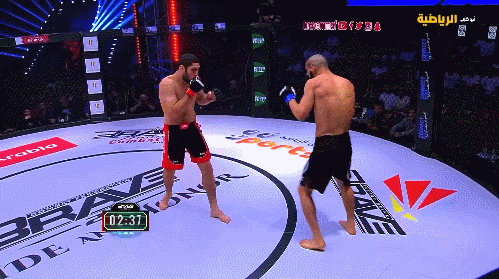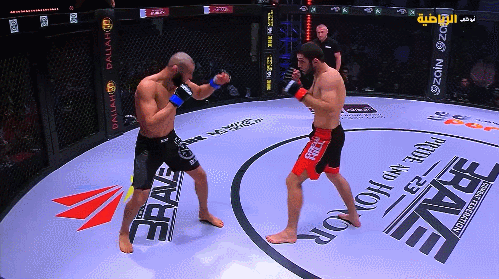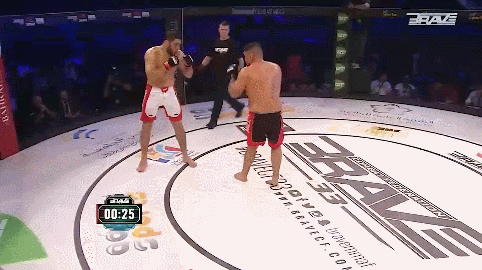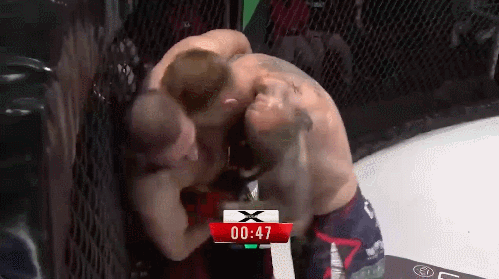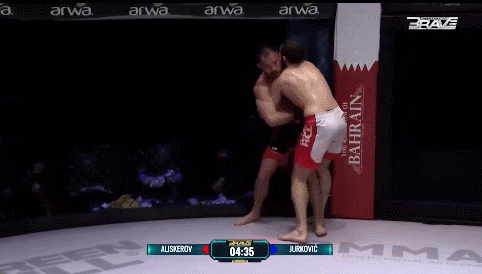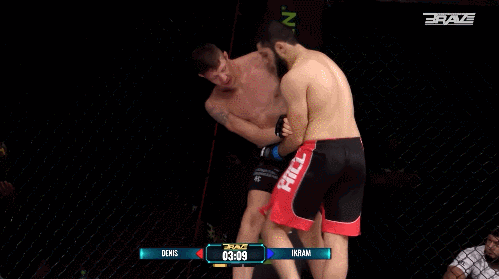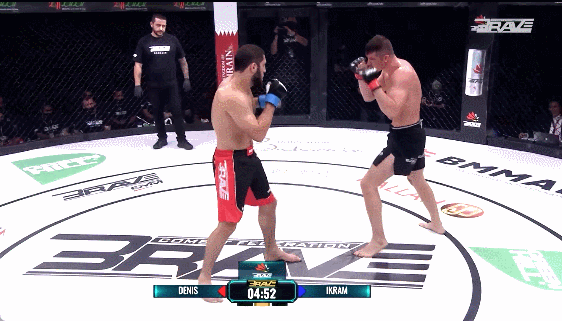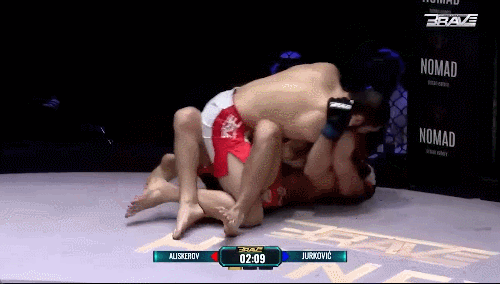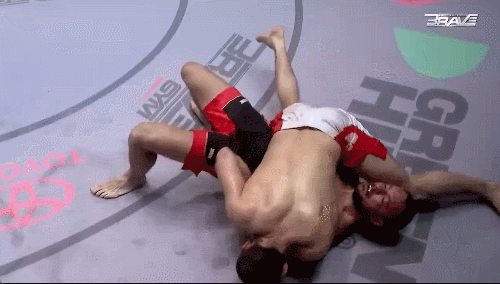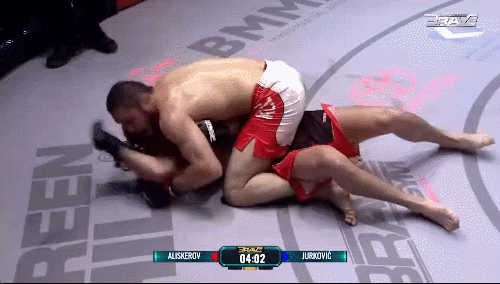Ikram Aliskerov -
The Quiet Dagestani
Ikram Aliskerov was born and trained in Dagestan. He has the Abdulmanap Nurmagomedov training lineage and four combat sambo world titles to boot, and yet hype has not stuck to him in the way you would expect.
That may be due to his low rate of activity and the way that all his interesting match ups fall apart. For instance, he has been scheduled to fight Anthony Hernandez and Andre Muniz this year, but on Saturday finds himself fighting what can only be described as “some Contender Series randomer.”
It could also be that he has a loss on his record. Khabib Nurmagomedov did many great things, but it is hard to forgive him for making MMA fans adopt the boxing focus on an undefeated record at all costs. Aliskerov suffered a knockout loss against the enormously impressive Khamzat Chimaev back in 2019 and seems to still have some work to do to outrun that.
But in the stale rankings of the UFC middleweight division, Aliskerov’s knockout punches and flashy throws are a more than welcome addition to the mix. Let us examine the game of Ikram Aliskerov.
The Striking Toolkit of Ikram Aliskerov
Aliskerov’s offence is built almost entirely around his jab, and most of the time he is operating this weapon he is either V-stepping or safety leading. We examined both techniques in Ilia Topuria: The V-Step, the Shoulder Roll and the Pivot. To briefly reiterate: a V-step is a linear attack and a diagonal retreat to the left or right.
The safety lead is closely linked to this. It is a jab thrown while stepping diagonally forward to the lead hand side.
The V-step and the safety lead are weapons that most fighters gravitate towards when they start focusing on their jab, but these fighters often come up short on the defensive end. The “safety lead” isn’t automatically “safe”, the fighter has to be ready to get down behind his lead shoulder when—not “if”—the opponent fires back with their right hand.
Aliskerov, however, demonstrates a true understanding of the V-step and the safety lead, rolling behind his lead shoulder and letting his opponent’s right hands bounce off the bone or fly clean over his head.
One of the benefits of the safety lead is that it can be a relatively conservative way to start scoring some points and establishing the jab. It builds well into the harder punching because the drift off to the left serves to line up the fighter’s right hand.
While a short step to the left isn’t the kind of big flanking movement that we think of when discussing “angles” in striking, it is enough of an angle change to shorten the path of the strike.
By sneaking his right shoulder inside of the line of the opponent’s left shoulder, the fighter also takes away some of his opponent’s best defenses: hiding behind the lead shoulder or raising the lead forearm to catch the straight.
Dealing with the line of the opponent’s lead shoulder is why Aliskerov disregards the right straight when standing directly in front of his opponent. Instead Aliskerov finds success with a wide right hook, thrown parallel to the floor rather than in an overhand fashion. When his opponent is keeping a high guard, Aliskerov slots this in the gap behind the crook of their elbow. You will recall that Conor McGregor used the same punch when Dustin Poirier was using a high lead forearm to obstruct McGregor’s left straight.
That is almost the extent of Aliskerov’s everyday outside striking. Beyond this jab is an occasional step up left high kick, and an incredibly goofy teep where he crunches himself into a ball before throwing.
But Aliskerov’s focus on the jab creates one opening over and over again. When his opponent dips to their right, to slip to the elbow side of the jab, he tries to blast them with a high kick, a left knee, or a double pump flying knee.
He will attempt the flying knee out in the open if he has his opponent obviously ducking, but he will also attempt it against the cage. This is the sensible choice because when the opponent is at the boundary they cannot retreat and lose access to 180 degrees of possible movement around them. The chances of Aliskerov connecting are higher and the chances of a decent counter are much lower.
The telegraphed run-up of the technique and the danger of attempting any sort of counter forces the opponent to cover up, and several times Aliskerov has run straight around to his opponent’s back off the knee.
Murthel Groenhart used to throw the double pump flying knee so frequently along the ropes that I often refer to it as the “Groenhart Knee”. He was not necessarily concerned about achieving a highlight reel knockout so much as forcing the opponent to cover and then following with body punching combinations as he came down. Even if he connects on the knee, Aliskerov continues his flurry rather than hoping for a highlight reel knockout and forgetting to follow up.
Aliskerov, of course, most recently knocked out Warlley Alves with this knee along the fence.
For more ideas on attempting big, flashy techniques along the cage check out The Max Holloway Master Study: Back Kicks
The Weakness of This Striking
Aliskerov’s striking can be summarized then as using jab to set up one of three things:
a powerful right hand,
a left kick or knee to punish dipping,
or to distract and bait the trap for a level change.
Like any mobility based striker he has run into some issues with low kicks. Opponents who attempt them early have success and it takes him a moment to commit to checking them. Even then, Aliskerov is still vulnerable to low kicks while he is jabbing. His leg can be completely taken out as he steps to his left, or his knee can be buckled as he steps straight forward to punch. Chad Hanekom lost a very sketchy split decision to Aliskerov after giving him some trouble with low kicks in the early going, and Mario Sousa did the same on the Contender Series.
Even in his loss to Khamzat Chimaev, this vulnerability showed up. Notice how taking the low kick momentarily locks Aliskerov’s stance up.
Perhaps it is not a “weakness”, but Aliskerov strikes best when he has a height and reach advantage. Against every competent, taller striker he has faced he has immediately played the part of the wrestler. Another look that seems to throw Aliskerov is stance switching. So far only Khamzat Chimaev has shown him this, but it is becoming pretty commonplace in MMA today so he will have to deal with it again at some point. Bruno Ferreira would be a fascinating match up because he is shorter and loses most exchanges to strikers with clean, conservative mechanics, but switches stances to create chaos and land fight changing counters.
The punch that Khamzat Chimaev scored to knock Aliskerov out is worth some praise on its own. We have examined how Aliskerov jabs with the expectation of the overhand coming back and always gets down behind his shoulder. The inside slip uppercut that Khamzat Chimaev threw—while a staggeringly rare counter—was perfect to sneak down the inside of Aliskerov’s jab and surprise him hunkered down safe behind his lead shoulder.
I have waxed lyrical about this counter before because it is so beautiful and so seldom seen. Mechanically it is almost identical to the cross counter—where the fighter slips to the inside of the jab and “crosses” it with his right hand—except it is more awkward and exposed. It even has its own romantic history like judo’s yama-arashi, or kendo’s triangle leap. This inside slip uppercut was reported to be the favorite punch of Gentleman Jim Corbett—boxing’s second heavyweight champion of the world. He wasn’t much of an inside fighter but he caused Bob Fitzsimmons to bite his tongue in half with an uppercut so there is a decent chance it was this shot.
Aliskerov recognized the beauty of Khamzat’s shot at least because he tried his own spin on it in his next fight.
Favourite Grappling Tekkers
Aliskerov has won the combat sambo world championship four times—though apparently two different bodies have world combat sambo championships so two of these wins are in the same year. Watching his sambo bouts it is apparent that he—like the great Fedor Emelianenko before him—had a lot of success simply punching out sambists who came to grapple. But he is not without skill in the grappling realm himself and he has relied on the interplay between striking and wrestling when faced with opponents over whom he holds no significant height or reach advantage.
As with anyone from a judo or sambo lineage, you would expect him to have a good grasp on throwing techniques. It has become abundantly clear that when a fighter is pressed against the fence, an understanding of the throwing game makes all the difference in the world. Whether it is an uchi-mata or a full step through harai-goshi, throwing off the overhook is a means for the man against the fence to attack, break his opponent’s balance and get back to a neutral position. Aliskerov most notably used these to create scrambles against Chad Hanekom and Khamzat Chimaev.
On offence, Aliskerov favors a throw that is often called Mongolian uchi-mata or the front uchi-mata.
It is most commonly seen in the Bökh wrestling of Mongolia, but Mongolian athletes have excelled in judo and sumo with the same throw. DPS Breakdowns made a great video study on this.
Essentially the fighter gets underhooks, wins inside hip position, begins lifting his opponent, and brings his knee up to lift their thigh from the inside—like an uchimata throw but facing into the opponent.
This throw can been used successfully from the classic Abdulmanap Nurmagomedov cage sequence—getting the bodylock and stepping one knee inside, against the fence. In fact, Islam Makhachev has performed one of these in the UFC.
Yet Aliskerov seems to prefer pulling his man off the cage and creating a sort of waltz, before slinging them out in the open mat. A particularly nice touch with this throw is that after lifting his opponent’s leg with his thigh, Aliskerov slips his knee inside and lands on top with his knee peeking through into a three-quarter mount.
Much of Aliskerov’s success in the wrestling has still been found by point scoring with his jab just enough to encourage the opponent to step in and swing. When they do, he is already ducking onto their hips and running them off their feet.
On the mat Aliskerov is an effective ground and pounder. He has that rare skill that Fedor Emelianenko demonstrated: ability to punch with just the arm from the shoulder and still get decent force on the shots. Unlike Fedor he does not stand over his opponent to take big, full bodied swings in between, but rather holds his position.
Like Islam Makhachev, Aliskerov adores the kimura. It makes sense because half guard is one of the most common positions in mixed martial arts, and the bottom man’s immediate instinct will always be to dig an underhook. The moment they do, he brings his torso down to their hips to squash the underhook and tries to dig the hand free in order to place it on the mat.
The same is true from side control. If the bottom man begins to hunt the underhook, Aliskerov drops his chest and head, and the bottom man is left with his hand shallow and his elbow way out to his side. This makes it very easy for Aliskerov to figure four his hands and push the opponent’s hand to the mat.
Once the hand is on the mat, Aliskerov cannot reliably finish unless he gets his opponent’s back off the mat and their hand behind them. He does this in the classic style that Masahiko Kimura himself used: stepping over the head and lifting the opponent onto his side.
In his earliest fights, Aliskerov would even abandon mount to attempt to snag the kimura. Striking from mount would often force the opponent to cover with high elbows, and he could dive his head into their armpit, creating the loop in the arm for the kimura.
In his last Brave CF fight, Aliskerov was able to use the mount to force Miro Jurkovic to turn. He then used the half nelson to drive Jurkovic back to the mat, again with his head inside of the elbow. He then dismounted to lock his hands for the kimura and score the submission.
It is unusual to have three kimura submissions on your record, but Aliskerov hunts for the hold in every fight. He does not fixate on finishing it either: he uses it to pass guard, and if the opponent turns away from him he simply pushes his way to three quarter mount and continues hitting them until the opportunity presents itself again.
Adaptability is the name of the game for Aliskerov. He does not have that many tools in any one area, but he has enough that he can manipulate the fight into an area where he his offence outperforms his opponent’s defence. Perhaps the best example of his adapting on the fly came against Phil Hawes. Aliskerov got cracked with a counter right hook as Hawes went southpaw and immediately recognized that whenever Hawes was southpaw, that would be his go to.
Aliskerov engaged again and clipped Hawes with a high kick in his lean.
Then he engaged once more and threw a right straight about a two feet to the right and below where he normally would. The result was a crazy looking punch that landed exactly on the side of Hawes’ famously shaky chin and sent him down for the knockout.
Aliskerov may not be breaking into the top fifteen if he wins this weekend—and hell, there is always the possibility the newest middleweight Contender Series graduate defeats him. But if you like your Dagestanis with an ability and willingness to crack, Aliskerov is your man.
For more Dagestani smashing excellence, check out How Islam Makhachev Defended the Crown against Dustin Poirier

